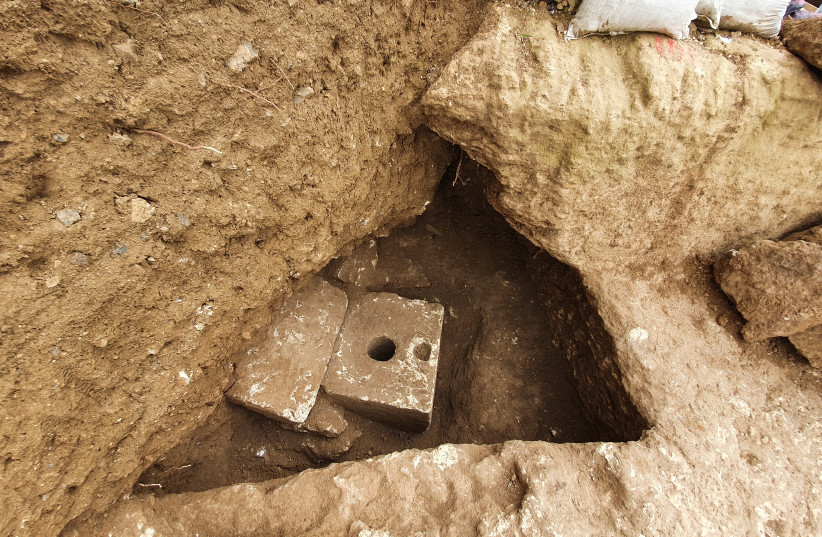2,700-year-old toilet reveal: First Temple Jews had gut parasites - Attn Shnorrers - Forget The Big House - Check The Table!
Researchers analyzing the content of the toilet could identify traces of eggs from four different types of parasites: roundworm, tapeworm, whipworm and pinworm.

The rare stone toilet is 2700 years old. Most likely used by one of the dignitaries of Jerusalem.
Ancient Israelites living in Jerusalem at the time of the First
Temple suffered from infectious diseases caused by intestinal parasites,
a study conducted by Tel Aviv University and the Antiquities Authority
(IAA) on a 2,700-year-old toilet has revealed.
The toilet was recently uncovered
in the remains of a luxurious palace offering a spectacular view over
the Temple Mount in the Armon Hanatziv neighborhood. Experts believe
whoever lived there must have been a member of the elite, perhaps the
royal family, because private toilets at the time were extremely rare.
In
the palace, the cubicle was a rectangular cabin hewn in stone. The
toilet seat, with a hole in the center, was designed to be very
comfortable. A tank stood under it, where remains of pottery, animal
bones, and soils were collected.
Researchers
analyzing the content of the pit could identify traces of eggs from
four different types of parasites: roundworm, tapeworm, whipworm, and
pinworm.
“These
are durable eggs, and under the special conditions provided by the
cesspit, they survived for nearly 2,700 years,” she said. “Intestinal
worms are parasites that cause symptoms like abdominal pain, nausea,
diarrhea, and itching. Some of them are especially dangerous for
children and can lead to malnutrition, developmental delays, nervous
system damage and, in extreme cases, even death.”
In
the absence of medical knowledge, it was almost impossible at that time
to recover from the presence of these parasites, Langgut said, and
therefore, the discovery likely points out that even the most privileged
individuals permanently suffered from the diseases caused by them.
As
for what caused the infections in the first place, it could have been
due to poor hygienic conditions, including not washing hands regularly,
food contaminated by feces, including due to their use as fertilizer, or
food poisoning after eating meat not properly cooked.
“Studies
like this one help us document the history of infectious diseases in
our area and provide us with a window into the lives of people in
ancient times,” Langgut said.
The
researcher is also working on analyzing additional samples from the pit
to discover more about the diet of people living in ancient Jerusalem.
Only a handful of toilets remain from the First Temple period have been found in Israel.
“In
many cases, they were not complete toilets, but just toilet seats,”
archaeologist Yaakov Billig, director of the excavation on behalf of the
IAA, said after the discovery of the toilet was revealed in October.
“At
the time, cesspits were also used as garbage cans,” he said. “The vast
majority of the vessels found were bowls. It could be that they were
some kind of disposable dishes, but also that they were used as
containers for aromatic oil and were put in the toilet to improve the
smell.”
Even a millennium later, access to a toilet was considered a rare privilege, Billig said.
“In
the Talmud, a group of rabbis discuss who is to be considered rich,” he
said. “Different rabbis suggest different answers, and one of them,
Rabbi Yossi, says, ‘One who has a toilet next to his table.’”


